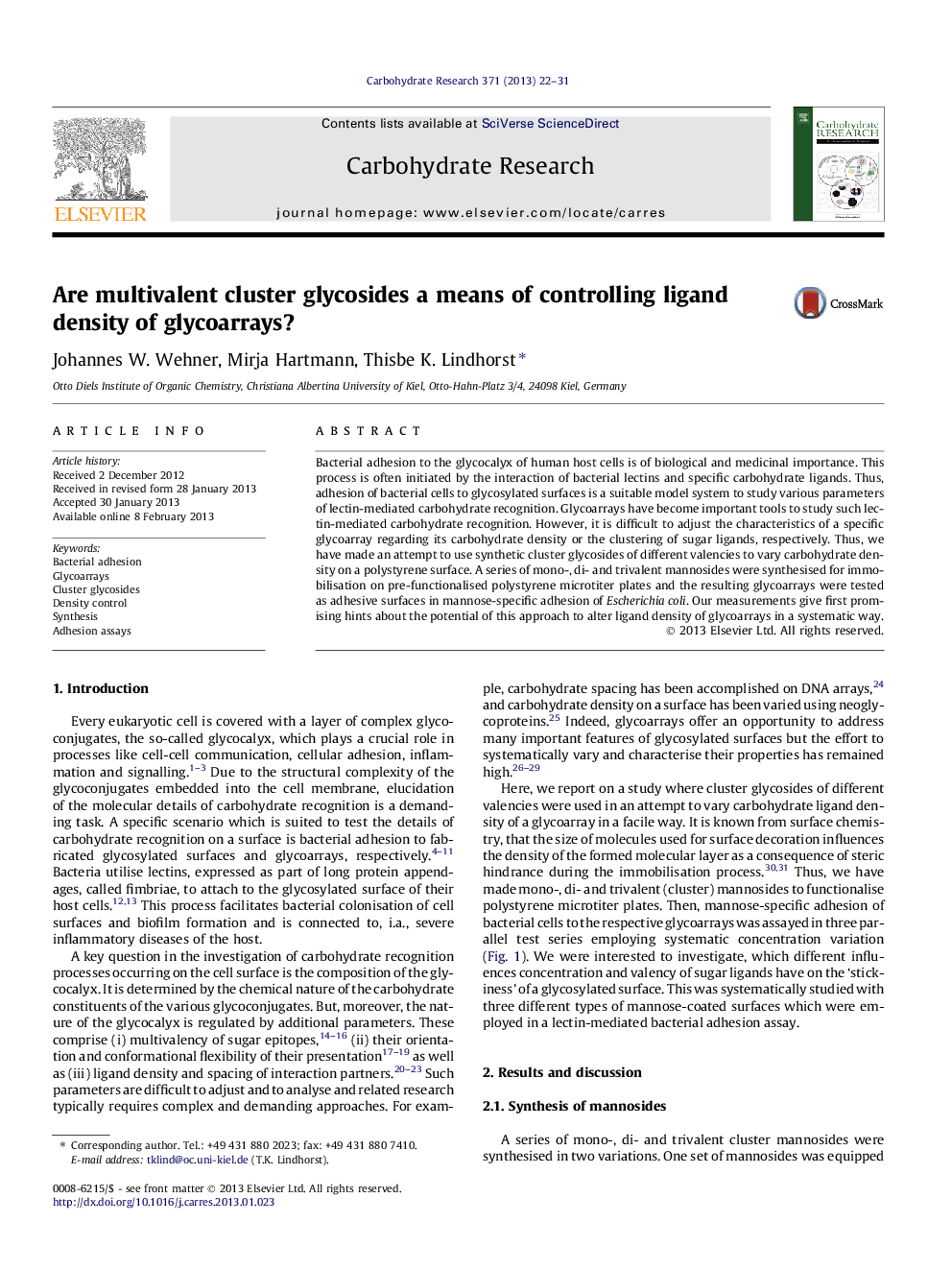| Article ID | Journal | Published Year | Pages | File Type |
|---|---|---|---|---|
| 1383866 | Carbohydrate Research | 2013 | 10 Pages |
Bacterial adhesion to the glycocalyx of human host cells is of biological and medicinal importance. This process is often initiated by the interaction of bacterial lectins and specific carbohydrate ligands. Thus, adhesion of bacterial cells to glycosylated surfaces is a suitable model system to study various parameters of lectin-mediated carbohydrate recognition. Glycoarrays have become important tools to study such lectin-mediated carbohydrate recognition. However, it is difficult to adjust the characteristics of a specific glycoarray regarding its carbohydrate density or the clustering of sugar ligands, respectively. Thus, we have made an attempt to use synthetic cluster glycosides of different valencies to vary carbohydrate density on a polystyrene surface. A series of mono-, di- and trivalent mannosides were synthesised for immobilisation on pre-functionalised polystyrene microtiter plates and the resulting glycoarrays were tested as adhesive surfaces in mannose-specific adhesion of Escherichia coli. Our measurements give first promising hints about the potential of this approach to alter ligand density of glycoarrays in a systematic way.
Graphical abstractFigure optionsDownload full-size imageDownload as PowerPoint slideHighlights► Three mannose conjugates were prepared and tested as inhibitors of bacterial adhesion. ► Glycoarrays were fabricated from the new glycoclusters. ► Testing showed different trends of bacterial adhesion, suggesting that ligand density is varied with cluster valency.
